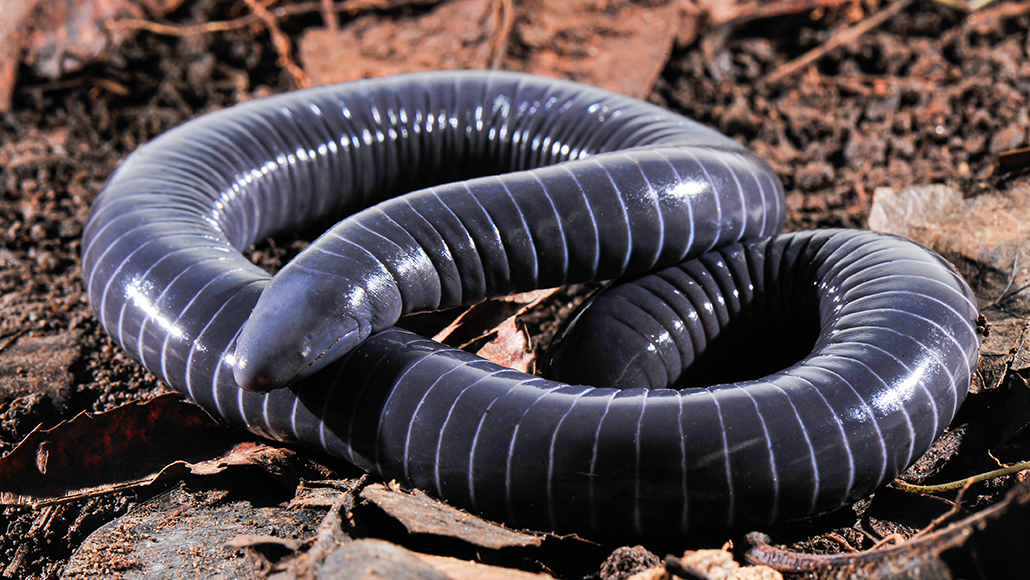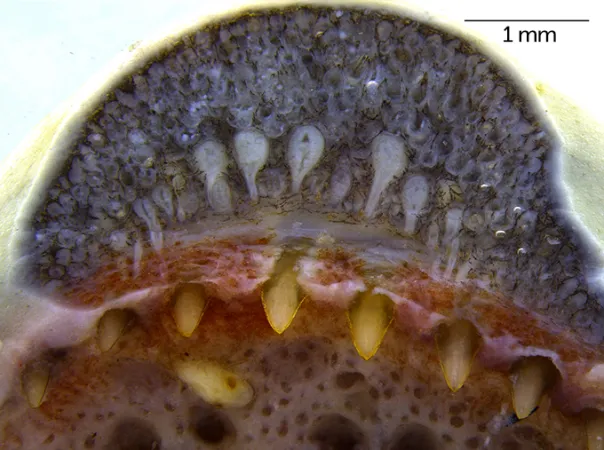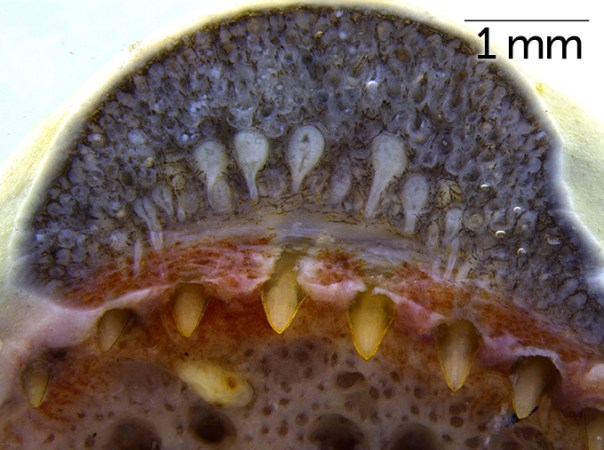
Ringed caecilians (Siphonops annulatus) don’t just look like snakes; new research suggests they might also deliver a venomous bite.
Carlos Jared
- More than 2 years ago
Caecilians are amphibians like salamanders and frogs, but they’re often mistaken for snakes because of their long, legless bodies. Now, scientists think that the similarities between the two are more than skin deep.
New microscope and chemical analyses suggest that, like snakes, caecilians have glands near their teeth that secrete toxins. The discovery raises the possibility that caecilians may be the first amphibians found capable of delivering a venomous bite.
Pedro Mailho-Fontana, an evolutionary biologist with the Butantan Institute in São Paulo, has been studying caecilians for several years, and in particular, the glands in their skin. He has helped show that the animals have separate glands for secreting mucus on their heads and poison on their tails.
But one day in early 2018, as Mailho-Fontana was slowly eroding the skin on the skull of a dead ringed caecilian (Siphonops annulatus) to get a closer look at the mucus glands, he saw something that made his hair stand on end: large glands in the animal’s upper and lower jaws that had ducts going to the teeth.
Mailho-Fontana, along with fellow evolutionary biologists Marta Antoniazzi and Carlos Jared also at the Butantan Institute, set about characterizing these unexpected oral glands in several caecilian species using standard and electron microscopes. Perhaps the most striking finding is that the glands arise from dental tissue. That’s just like venom glands of snakes, but it’s a first for amphibians, the researchers report July 3 in iScience.
The team also performed preliminary biochemical tests on the fluid in the newfound glands, and discovered that it contains phospholipase A2 enzymes, a large group of fat-chopping proteins that are frequent components in animal venoms. But the work stopped short of conclusively showing that the animals are venomous.
Venoms aren’t entirely unknown from amphibians; some use bony protrusions to create wounds in their attackers and deliver skin-derived toxins that way. And Jared and his colleagues previously discovered the only known venomous frogs (SN: 8/6/15). But Jared notes that these amphibians cannot inject their venoms and instead rely on an attacker pressing on their pointy bits.


The caecilian oral glands don’t appear to help inject secretions either. The team didn’t find any tubes or grooves in the teeth that could facilitate the delivery of the fluid. Instead, it appears the glands work more like the venom systems of Gila monsters or other venomous lizards: The glands simply ooze secretions onto the teeth, which then enter the victim as those teeth tear into flesh.
That these snakelike animals seem to possess a venomous bite even somewhat akin to snakes’ isn’t likely to be a coincidence, Antoniazzi says. “We think it has to do with this fact that they have similar bodies,” she says. Without limbs to subdue prey, both caecilians and snakes benefit from having oral chemical weapons.
The caecilians’ teeth and associated glands are “extremely fascinating,” says Kartik Sunagar, an evolutionary biologist with the Indian Institute of Science in Bangalore, comparing them to “something out of an alien movie.” But it’s still unclear if the gland secretions are indeed toxic and play a functional role in feeding or defense, he says.
Tracking which genes are turned on or off in the oral glands compared with the tail poison glands or other tissues could give a better sense of what the oral secretions contain and whether they are unique to those glands, Sunagar says.
The team hopes to provide additional evidence for these amphibians being venomous soon, including a more detailed work-up of the oral gland components, which would shed new light on these enigmatic and poorly studied animals. Caecilians are “perhaps the most unknown vertebrate,” Jared says. “This project has opened the door for future studies.”






